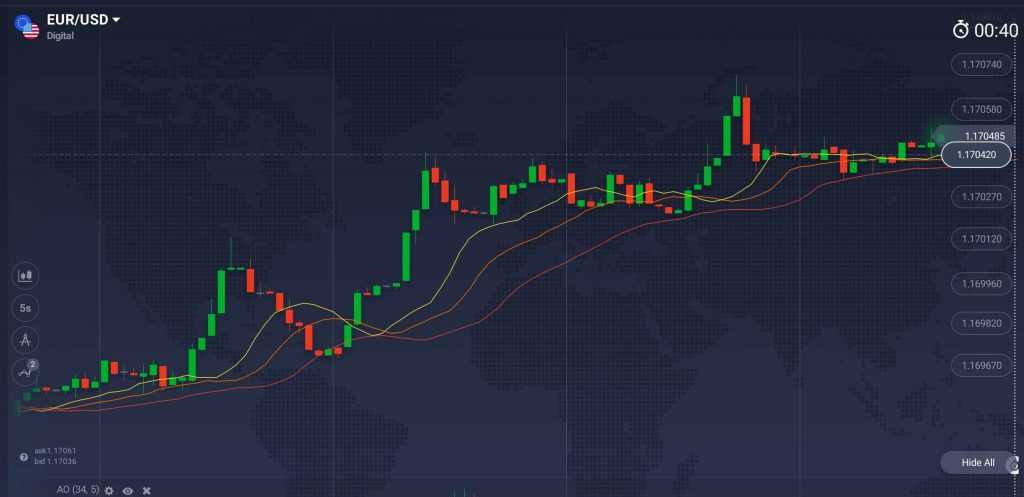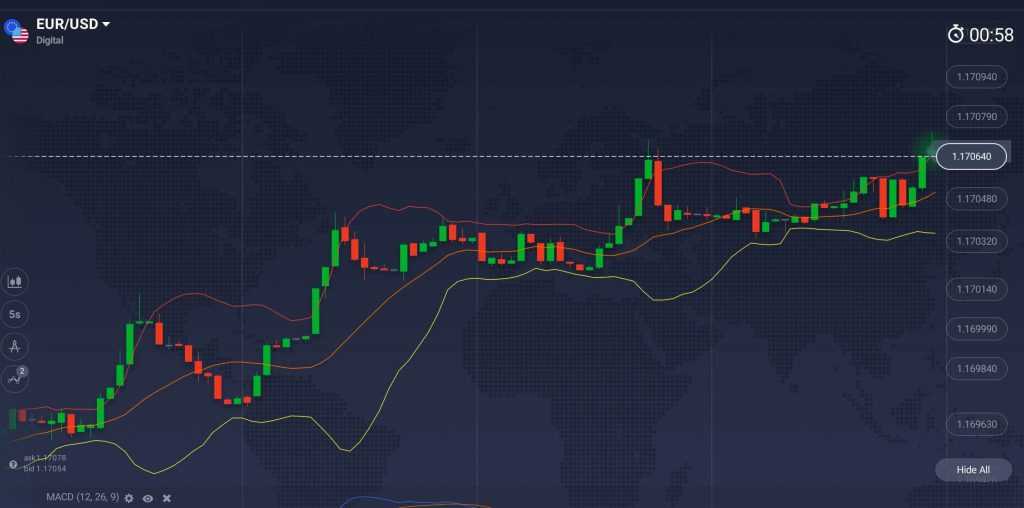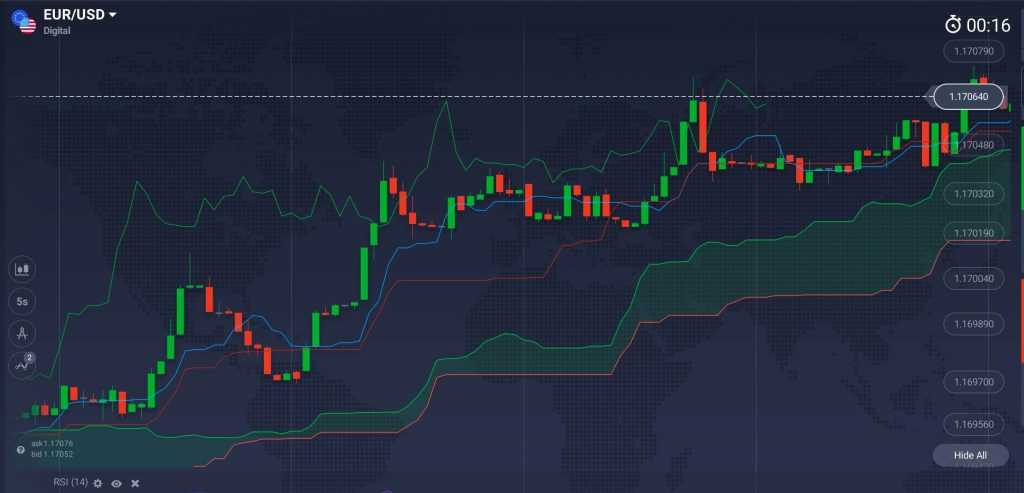IQ Option trading platform has been gradually extending a variety of technical indicators for your convenience. How not to get lost in this variety and choose those instruments that beautifully complement each other without duplicating signals?
In fact, a significant part of these instruments can be divided into two groups: trend indicators and oscillators. For the best combination, indicators from different groups are often used. Yes, it’s that simple. There are also several exceptions. Among them is the Ichimoku Cloud, which can be attributed to both these groups, as well as ATR and Bollinger bands, which belong to volatility indicators. In order to make it easier to understand, we have selected 3 indicator combinations that go together.
Awesome Oscillator and Alligator
Awesome oscillator and Alligator indicator are the harmonious pair. They are also developed by the same author Bill Williams. Interesting fact: Bill Williams was a trend trader favoring stronger trends on longer timeframes – conditions that are considered best for this indicator combination, since both instruments are lagging (following the trend). Alligator is a trend indicator.

Serving the purpose of signaling a new trend, identifying its direction and displaying its strength, Alligator may indicate the direction of price movement, in accordance to which a trade can be opened. Awesome oscillator, on the other hand, is a momentum oscillator intended to signal entry points for opening a trade and exit points for closing it, once the trend is defined.
MACD and Bollinger Bands
MACD and Bollinger Bands can be of significant benefit to one another. MACD shows convergence and divergence of moving averages. Serving the purpose of indicating the reversal, direction and strength of the trend, it often leads traders to adopt trading strategies that account for a coming trend reversal. Bollinger bands belonging to a category of trend indicators reflect the dynamic range of price movement.

They serve to characterize the prices and volatility, defining prices to be relatively high at the upper band and relatively low at the lower band. With MACD being rather versatile, a variety of strategies may be based on this combination. Often, MACD serves as a signal generator for entry and exit points, whereas Bollinger Bands serve as a signals filter.
Ichimoku Cloud and RSI
While Ichimoku Cloud, or Ichimoku Kynko Hyo, at a first glance is likely to confuse its novice user, it’s certainly worth his attention. Ichimoku combines the characteristics of a trend indicator and an oscillator all in one. It can indicate price dynamics, trend direction, as well as support and resistance levels. Despite of being good on its own, Ichimoku is often complemented by oscillators to confirm momentum of a certain direction. One common pair for such purpose is RSI (Relative Strength Index) – a momentum oscillator provided to determine the strength of the current trend and its possible reversal points.

Discover your all-time favorite combination; following these simple guidelines while keeping in mind that any indicator, as well as their combination, can occasionally give false signals. Besides, their accuracy may vary depending on other crucial factors, such as the chosen timeframe, volatility of the market and major economic events. Test your strategy on a demo balance prior to investing your funds and remember that no indicator — no matter how good — is capable of providing accurate signals 100% of the time.

